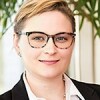Report Calls for Better Recruitment of High School Teachers in STEM Subjects
The American Physical Society, an AIP Member Society, in collaboration with the American Chemical Society, the Computing Research Association, and the Association of Public and Land-Grant Universities’ Mathematics Teacher Education Partnership, recently released a report titled “Recruiting Teachers in High-Needs STEM Fields.” The report surveys undergraduate STEM majors’ attitudes about teaching and suggests ways to incentivize more students to become teachers.
The report documents a domestic shortage of individuals with the education and training needed to succeed in a STEM career. It attributes much of the shortage to high school students being “underprepared and unable to handle the rigorous courses required” for STEM majors. Much of this is caused by an underlining shortage of teachers who have the requisite education and certification in STEM subjects. For example, the study finds that more than half of all high school physics teachers lacked certification in the discipline.
The report also finds that, compared to other developed countries, U.S. students are not as exposed to STEM subjects during high school. While initiatives such as PhysTEC, Noyce Scholarships, and UTeach are designed to address the disparity, it observes, “national gains have remained small in relation to the national need.”
In a press release , Michael Marder, a co-author of the study and physicist at the University of Texas at Austin, emphasized that “every high school student deserves a great teacher” in subjects like computer science and physics. In a quote provided to FYI, he added,
Providing more high school teachers in high-needs fields including physics, computer science, chemistry, and mathematics is one of the most important challenges universities face.
Financial perceptions and incentives a key factor
Of the students surveyed, about a quarter reported that they were “somewhat, quite a bit, or very interested” in teaching, with mathematics majors showing the most interest and computer science majors showing the least. Top motivators for students interested in teaching include “sharing enthusiasm for technology,” inspiring impressionable minds, and enjoying mentoring others.
However, those surveyed also cited “uncontrollable or uninterested students,” low salaries, and a dislike for working with students as major disincentives toward choosing a teaching career pathway. Students who said they are not interested in teaching also cited low wages as a serious drawback of a teaching career.
The report notes, though, that the salaries of high school teachers are actuallygreater than the salaries of college instructors and lecturers who are not tenured or tenure-track faculty. Moreover, when students were asked how much they thought high school teachers made, responses were considerably less than actual salaries. “It is striking that students consistently underestimate what teachers actually earn, and when asked what they would want to earn as teachers, students indicate a desired salary very close to the current actual salary,” the report observes.
Survey respondents were also asked about activities and programs that would increase their interest in teaching, including financial incentives and access to professional development. Increased salary was cited as the strongest incentive for students, with the report finding an increase of between $5,000 and $25,000 “sufficient to draw a significant numbers of new teachers into the profession.” Other incentives, such as free tuition and loan forgiveness programs, also considerably increased interest among students who were only somewhat interested in teaching, but other incentives were not as important as higher salaries.
The report also examines the role of institutional support for STEM teaching. Only a quarter of survey respondents majoring in physics and chemistry reported that teaching was discussed as a career pathway. According to Marder, faculty simply mentioning teaching as a career option to students “can have a significant effect.”
Report recommendations
The report’s recommendations for professional societies and academic departments include the following:
- “Impress upon university faculty and advisors in STEM disciplinary departments the importance of promoting middle and high school teaching with their undergraduate majors and graduate students, and of providing them accurate information about the actual salary and positive features of teaching.
- Support high-quality academic programs that prepare students for STEM teaching, and expand good models to more universities. Strong programs provide improved coursework, prevent certification from requiring extra time, and support their students and graduates financially and academically.
- Support financial and other support for students pursuing STEM teaching.
- Advocate for increases in annual compensation, including summer stipends, in the range of $5,000 to $25,000 for teachers in the hardest-to-staff STEM disciplines.
- Support programs that improve the professional life and community of STEM teachers.”
The report is based on a sample of over 6,000 current and recent majors in high-needs fields such as physics, chemistry, and computer science who were interviewed in fall 2015 and spring 2016.



